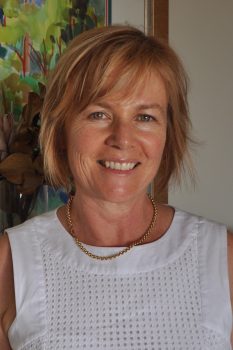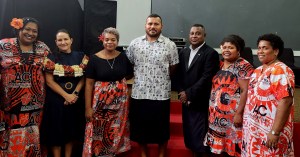Bush communities need different approach
The federal government should consider developing a flexible, community-focused service model for older Australians living in remote Australia, writes Dr Heather Gibb.

The federal government should consider developing a flexible, community-focused service model for older Australians living in remote Australia, writes Dr Heather Gibb.

What makes someone choose to grow old in remote, isolated regions of Australia? This question was foremost on my mind when I undertook a study recently into ageing in communities in the remote Northern Territory.
I was interested particularly in what helps older people remain resilient in these places. The 16 people who took part in my study (nine were women, 11 people were part of a couple) were all retired, non-indigenous, aged over 65 (except for one who was 62) and living in a remote area between Darwin and Katherine.
Some of these people were old timers, having grown up in the township or on stations in the region; all had had some form of employment most of their life: professionals, public servants or tradespeople. None were living with or near their children.
Like many ex-mining towns in the NT, younger people typically leave to seek work elsewhere, leaving a rapidly ageing population within towns and surrounding regions. Canadian researchers Mark Skinner and Neil Hanlon describe these populations as the “neglected contexts of rural ageing”.
Given these seniors were without close family, community was everything to them. Each person contributed skills and abilities from their earlier work experience to maintaining services on a voluntary basis – filling gaps in the services available locally.
For example, an ex-nurse was often called out to help with showering when a neighbour had returned from hospital and was temporarily disabled, while an ex-plumber was regularly sought to unblock someone’s drain.
Ex-public servants lobbied on behalf of the town for improved telecommunications and some former urbanites, who recently retired in the town, started up two very popular social events – a stretch exercise class for older people and a quiz night that attracted everyone, including passing tourists.
However, beneath this dynamic self-sufficiency was a shared dread of having to leave when it became too difficult to manage independently. When I asked about community ageing support services, almost everyone responded by saying there were none.
One person had managed, about a year ago, to become connected with a provider of home care support, as part of a hospital discharge plan. She was enjoying grocery shopping online with an agent bringing the shopping to the local town once a week. No one else seemed to believe they were eligible for this service nor were they aware of any older people in town receiving it. Information about My Aged Care had not reached the community, which contributed to uncertainty about how to access services.
Stories were shared about how personal care services were sometimes commenced on discharge from a hospital stay but were unreliable and eventually ended. Two of the women – both born and raised on rural properties in the region – were carers of husbands with dementia. Neither were able to receive any respite. One eventually moved to Darwin to obtain help. She described that decision: “It is breaking my heart”.
The importance of community
These older people had very clear views about the kind of aged care services that were provided from outside of their local community. They believed that individual care packages were of limited relevance for what they were trying to do: maintain their collective resilience. As one said:
“Services tend to divide communities into individuals…but Community is more than just a group of individuals.”
Moreover, they had great difficulty with aged care assessments that focused on individuals without taking into account their social circumstances. They believed firmly that unless providers listened to local carers and understood how each person is connected to community, these services would only manage to run “roughshod” over their current networks of carers and, in fact, break the bonds people had with their community.
I began to understand the importance of community to these seniors in a new way. Everyone participated in giving and receiving help within their community:
“But most people underneath, they have an obligation to pay back the favour, if not to that person, to at least someone else. I think that’s what makes the energy go round.”
Volunteer work operated like a barter system in which participation and shared problem-solving was exchanged for both practical help and a shared sense of belonging.
Limits of CDC in a remote context
The people I interviewed had heard of consumer directed care and were optimistic it would provide a way to meet their needs to age-in-place, sometime in the future. However, they were realistic about its limitations when there were currently no reliable services to be accessed in the region.
Due to a lack of services, the suggestion was made that CDC needed to be sufficiently flexible to remunerate community members for volunteering to take meals or providing similar help to seniors in their homes.
They also wished to be able to organise for a CDC type service to provide care to groups of people rather than just one person, given the travel times involved for outsiders to deliver services to the community.
I realised these people have a more collectivist understanding and value regarding their life in small remote communities in contrast to the relatively individualistic life that people in metropolitan Australia value.
This explains how they come to question the relevance of care packages and assessments of need that are entirely individually focused.
In this respect, non-indigenous older people living in isolated remote communities, especially those in extreme climate conditions such as in northern Australia, share a set of lifestyle values more in common with indigenous Australians.
Important insights into the needs of indigenous seniors living on remote homelands have been captured by researchers such as Kay Smith, John Grundy and Harry Nelson. The two most important principles within their model of indigenous aged care are community control over how services are designed and delivered, and cultural comfort. Cultural comfort occurs when service design begins with the local culture, is built around local need, and delivery is embedded within the practices already in place in the community.
I believe these insights provide some useful language for also describing the needs of remote non-indigenous seniors, relating to ageing support services to their community.
Towards a community-focused remote model
Assessment of need ought to take a broader community perspective, so as to protect the person’s social role and their ties with volunteer networks in the community.
Service delivery needs to be designed with the involvement of all, based on the premise that services would be designed for community as much as individual need.
Complex eligibility criteria are confusing to a small community where resources are shared equally according to need. To provide personal care to one person but not their equally frail neighbour creates social division and can isolate the person socially.
I’ve been reflecting on the strides made by the Commonwealth Government in adapting a complex services funding system to allow indigenous ageing support to evolve in the direction of greatest benefit for their community via the National Aboriginal and Torres Strait Islander Flexible Aged Care Program.
It may be time to focus attention on a rapidly growing but little understood cohort of seniors who wish to age in remote places, and whose needs also require a flexible, community-focused service design.
Dr Heather Gibb is a principal research fellow at Charles Darwin University.
This article appears in the Winter edition of Community Care Review magazine, which is out now.




Interesting focus Heather. The nexus between ‘community and individual’ laid bare within isolated, remote area communities. A bit like being serviced by FIFO home care support limited to task, exclusive of process. The more isolated, remote the community, the more an individual relies upon community links to survive. The problem being: ageing versus health versus future options, with greater need for increased support. The downside for the more dependent individual, being an unacceptable reduced reciprocity. The existing Community Home Care model requires modification; cost, technological, and as your article identifies a far greater emphasis upon, and acknowledgment of, the community family.